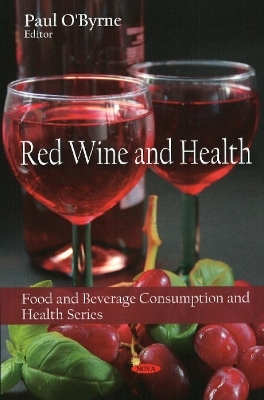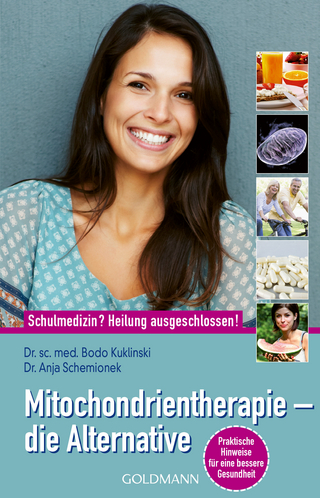
Red Wine & Health
Nova Science Publishers Inc (Verlag)
978-1-60692-718-2 (ISBN)
The book revises the principal strategies for the characterisation of red wines based on compositional profiles of biogenic amines as a source of information. Special attention is paid to toxicological and organoleptic repercussions associated with the presence of these natural components of wines. This book also aims to characterise the red wine through dielectric parameters. An overview of the basics of the dielectric properties of materials, specifically in foods is also presented. Phenolic compounds in wines, especially in red wines, possess strong antioxidant activity in vitro. Phenolic compounds, obtained in red wine, are natural constituents of grapes and wines. They have the largest effect in decreasing atherosclerosis by both hypolipemic and antioxidant mechanisms. Thus, phenolics show a positive effect on human health and they may cause an increase of antioxidant activity of blood plasma. In this book, the effect of total phenolics [TP], total anthocyanins [TA] on the antioxidant activity [AA] is discussed. Furthermore, the applications of the different analytical methods that have been developed so far for the analysis of natural antioxidants in red wine are discussed, such as high-performance liquid chromotography (HPLC), gas chromatography (GC), and capillary electrophoresis (CE). Also, the agents influencing the phenolic profiles of red wine are overviewed. Wine safety and healthiness depend on the interactions among various factors, several of which of microbial origin. This book explores scientific knowledge on the microbial role in the healthiness and safety enhancement of red wines, by proposing a specific selection of microbial starters. Furthermore, the growth and metabolism of lactic acid bacteria (LAB), which are essential in the quality of many fermented beverages like cider and wine, are discussed. In addition to malic acid, some other organic acids, sugars and carbon sources may be utilised by LAB modifying the sensory quality of these products. In fruit juice and related product, for example, they are considered spoilage microorganisms. Sulphur dioxide (SO2) is one of the most debated chemical components used in enology. Its important antioxidant, preservative and antiseptic properties are indispensable for the health, stability and quality of wine. Flow injection analysis offers great potentials on the field of automation in terms of high sampling rate, precision, accuracy and cost effectiveness. This book reviews automated flow injection methods for the determination of sulphur dioxide in wines. Moderate wine intake could play a protective role in several systems, including cardiovascular, digestive and neuroendocrine ones. Since the description of the French paradox, many beneficial effects of red wine have been described, namely those linked to cardiovascular disease protection. The most recent findings regarding the effects of red wine or its components on the adipose tissue are reviewed. In addition, it has been shown that red wine polyphenolics causes substantial falls in blood pressure, thus improving endothelial function and decreasing oxidative stress. These studies on vascular endothelium are also looked at. The main component considered responsible for the reduced risk of death in alcoholic beverages is ethanol. This book reviews the data generated to date on the amount of phenolic compounds necessary to elicit certain cardioprotective effects. This data may have implications for national alcohol and dietary guidelines, for medical practitioners who 'prescribe' daily moderate wine consumption, as well as for the wine industry per se redeveloping healthier wine styles and types.
Preface; Characterization of Wines through the Compositional Profiles of Biogenic Amines and Related Compounds. Focusing on the Description of Toxicological and Organoleptic Features; Dielectric Properties and Wines; Red Wine Phenolics: Reasons for their Variation; Antioxidants and Antioxidant Activity of Red and White Wines Affected by Winemaking and Other Extrinsic and Intrinsic Factors; Methods for the Determination of Natural Antioxidants in Red Wines; Biogenic Amines in Wines: A Review; Safety and Healthiness Enhancement of Red Wines by Selected Microbial Starters; Sugars, Organic Acids and Glycerol Metabolism of Lactic Acid Bacteria from Fruits and Fermented Beverages. Influence on the Products Quality; Levels of Pesticide Residues in Red Wine and Health Risk Assessment ; Sulphur Dioxide in Wines: Automated Determination Using Flow Injection Analysis; Does Oak Aging Improve the Antioxidant Activity of Red Wines?; Red Wine and the Metabolic Syndrome: Possible Contribution of an Old Remedy for An Emergent Problem; Red Wine and Vascular Endothelium; A Prooxidant Mechanism of Red Wine Polyphenols in Chemoprevention of Cancer; How Do We Demonstrate That There Is A Potential Therapeutic Role for Moderate Wine Consumption?; Kidney Protection by Wine through an Enhancement of the Antioxidant Defense System; Keeping the Track of Quality: Authentication and Traceability Studies on Wine; Dielectric Properties and Wines: Impasses, Development; Index.
| Zusatzinfo | Illustrations |
|---|---|
| Verlagsort | New York |
| Sprache | englisch |
| Maße | 260 x 180 mm |
| Gewicht | 1320 g |
| Themenwelt | Sachbuch/Ratgeber ► Gesundheit / Leben / Psychologie ► Alternative Heilverfahren |
| Medizin / Pharmazie ► Gesundheitsfachberufe ► Diätassistenz / Ernährungsberatung | |
| Medizin / Pharmazie ► Naturheilkunde ► Phytotherapie | |
| ISBN-10 | 1-60692-718-3 / 1606927183 |
| ISBN-13 | 978-1-60692-718-2 / 9781606927182 |
| Zustand | Neuware |
| Haben Sie eine Frage zum Produkt? |
aus dem Bereich


